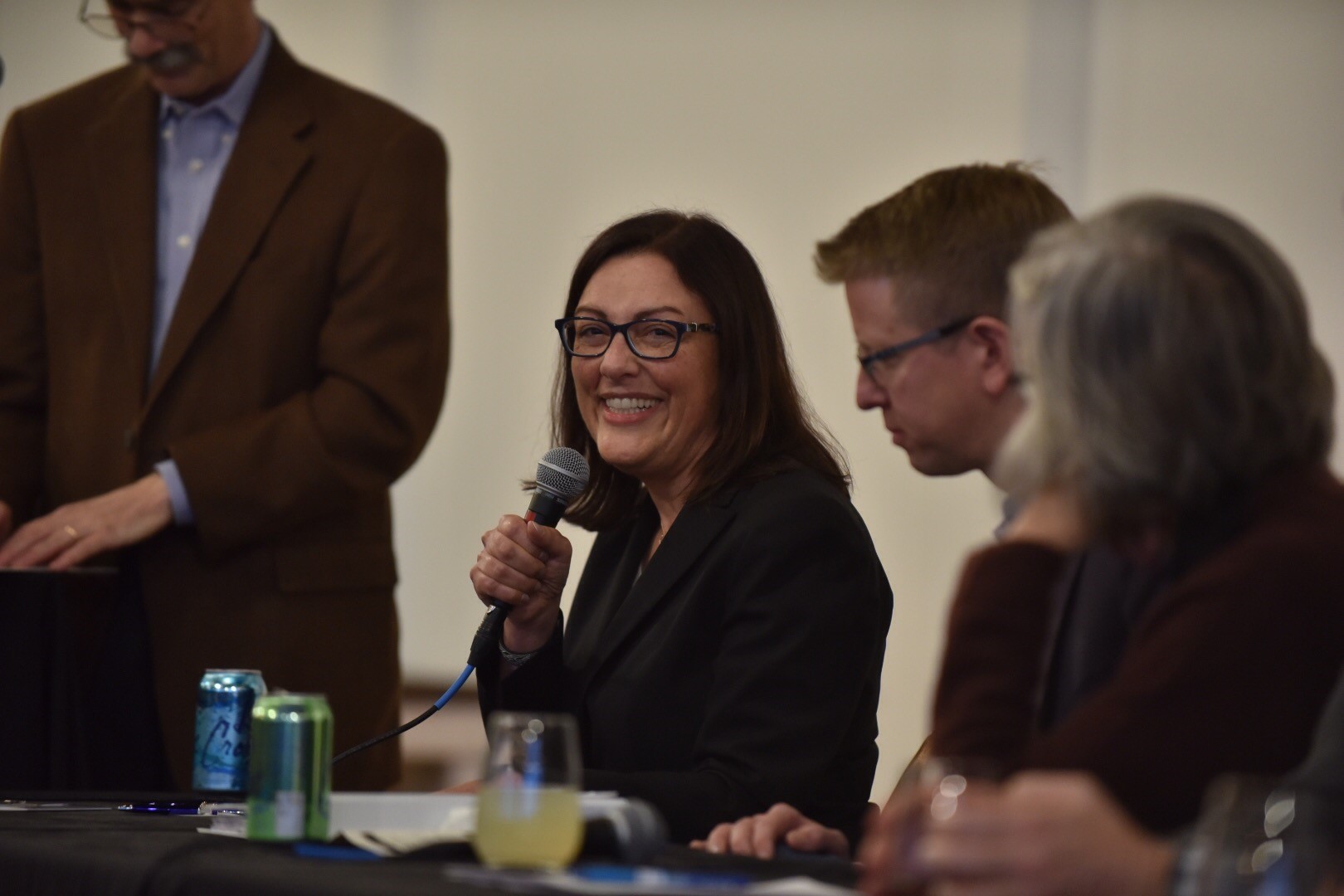(Originally Posted on Plan Washington Website)
“It can become another signature of sustainability for a region known for environmental leadership – what other types of buildings can you literally grow from a handful of seeds?” – architect Susan Jones
Progress in creating a regional and national market for cross laminated timber (CLT), an innovative building material rich in economic and environmental potential, was celebrated at a gathering of industry, design, academic, environmental and political leaders in Seattle on Nov. 1. CLT, speakers acknowledged, has the potential to house a growing population and create more robust rural economies.
“CLT has been used in Europe for 20 years, but it is relatively new to North America,” remarked Gene Duvernoy, President of regional sustainability nonprofit Forterra. “Vancouver, Portland, Chicago, and Minneapolis have complete or in-progress CLT projects that demonstrate both the possibilities and the hurdles for broad CLT construction. Washington State has the opportunity to be a U.S. leader in this exciting new industry by creating the market demand, the supply chain, and the regulatory structure that lets CLT fully deliver its economic and environmental benefits.”
Cross laminated timber (CLT) is a wood-based alternative to conventional construction materials like steel and concrete, and — unlike regular lumber — can be used structurally in very large and tall buildings. It is manufactured by fusing crisscrossing layers of wood, which leads to a material remarkable in strength, stability and range of sizes. If created from trees taken in fuels reduction and other restoration operations, CLT has potentially substantial environmental benefits, as well as the opportunity to generate well-paying rural jobs in logging, milling and fabrication.
One year after hosting an initial CLT summit, Forterra spearheaded the Nov. 1 gathering that featured Congresswoman Suzan DelBene, Congressman Derek Kilmer, President Fawn Sharp of the Quinault Indian Nation, University of Washington College of the Environment Dean Lisa Graumlich, Washington State University Regents Professor of Civil and Environmental Engineering Michael Wolcott, Architects Susan Jones of atelierjones, Thomas Robinson of LEVER Architecture and Forterra’s Gene Duvernoy.
Government can play an important part in bootstrapping a CLT industry, and elected officials at many levels are leading efforts. Locally, leaders are working to study building codes, facilitate siting, and attract investment. At the national level, bipartisan coalitions including Senator Maria Cantwell and Representatives Suzan DelBene, Derek Kilmer, Cathy McMorris Rogers and Rick Larsen are co-sponsoring Senate and House versions of the Timber Innovation Act. Among other provisions, it would expand grant funding
through the U.S. Department of Agriculture, research and development at institutions like the UW and WSU, and education and technical assistance for those wanting to enter the new industry. Forterra is marshalling a comprehensive, coalition-based effort to bring CLT to Washington in part thanks to a $250,000 Wood Innovations Grant from the US Department of Agriculture, one of the grant programs the Act would bolster.
“Advancing tall wood building construction is a win for working families and our environment,” DelBene said. “Technological advancements in cross laminated timber have made it easier for us to support healthy forests, wildlife habitats and rural economies dependent on forest products. I look forward to working with Forterra to advance and support these efforts both here at home and in the ‘other’ Washington.”
Kilmer added, “These days it’s rare to find something that unites and excites people on both sides of the aisle and can help grow rural economies and sustainable cities. CLT carries such a spectrum of potential benefits that virtually everyone wants to pitch in, and make sure we get it right.”
Architect Susan Jones of atelierjones said buildings made from mass timber work on so many levels – environmentally, urbanistically, and they provide a beautiful local focus for our region. Her Pacific Northwest firm has incorporated CLT into several projects, including a demonstration project involving Washington State school buildings. “It’s beautiful and easy to work with, giving designers like me a new creative design direction. What’s more, it can become another signature of sustainability for a region known for environmental leadership – what other types of buildings can you literally grow from a handful of seeds?”
Added Gene Duvernoy of Forterra: “CLT offers a way to extend some of the incredible prosperity of our Northwest cities to rural areas that haven’t fully recovered from all the economic jolts of the past 20 years. That’s both desirable and just. Given all the progress of this coalition in just a year’s time, I can’t wait to see where we go from here.”
For more information and to download a guide to CLT: Forterra.org/clt
Learn more about Forterra at forterra.org
 Rep. Suzan DelBene and Rep. Derek Kilmer
Rep. Suzan DelBene and Rep. Derek Kilmer
 UW’s Lisa Graumlich (left), WSU’s Michael Wolcott (center), and atelierjones architect Susan Jones (right)
UW’s Lisa Graumlich (left), WSU’s Michael Wolcott (center), and atelierjones architect Susan Jones (right)
